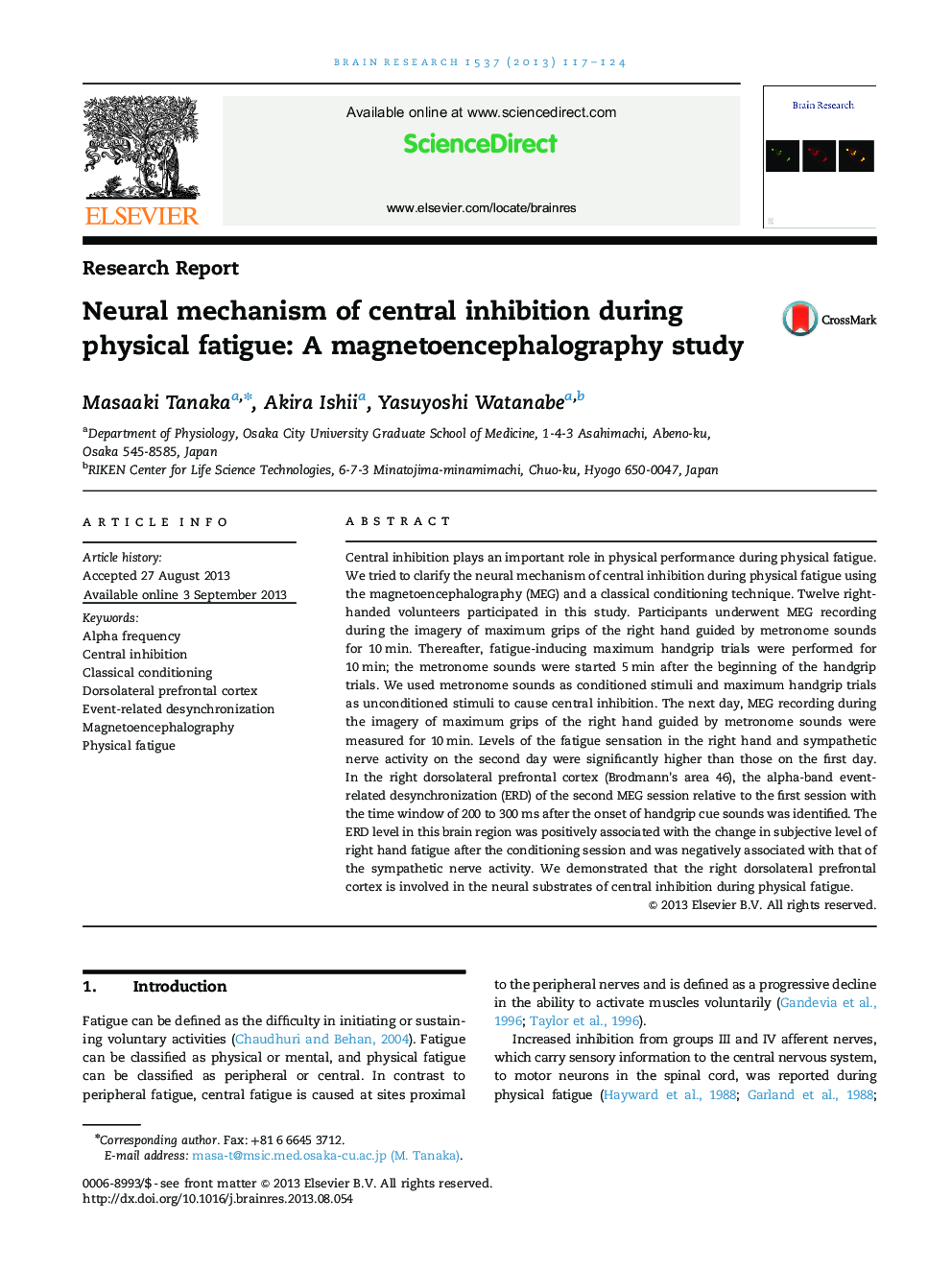| Article ID | Journal | Published Year | Pages | File Type |
|---|---|---|---|---|
| 6263534 | Brain Research | 2013 | 8 Pages |
Abstract
Central inhibition plays an important role in physical performance during physical fatigue. We tried to clarify the neural mechanism of central inhibition during physical fatigue using the magnetoencephalography (MEG) and a classical conditioning technique. Twelve right-handed volunteers participated in this study. Participants underwent MEG recording during the imagery of maximum grips of the right hand guided by metronome sounds for 10Â min. Thereafter, fatigue-inducing maximum handgrip trials were performed for 10Â min; the metronome sounds were started 5Â min after the beginning of the handgrip trials. We used metronome sounds as conditioned stimuli and maximum handgrip trials as unconditioned stimuli to cause central inhibition. The next day, MEG recording during the imagery of maximum grips of the right hand guided by metronome sounds were measured for 10Â min. Levels of the fatigue sensation in the right hand and sympathetic nerve activity on the second day were significantly higher than those on the first day. In the right dorsolateral prefrontal cortex (Brodmann's area 46), the alpha-band event-related desynchronization (ERD) of the second MEG session relative to the first session with the time window of 200 to 300Â ms after the onset of handgrip cue sounds was identified. The ERD level in this brain region was positively associated with the change in subjective level of right hand fatigue after the conditioning session and was negatively associated with that of the sympathetic nerve activity. We demonstrated that the right dorsolateral prefrontal cortex is involved in the neural substrates of central inhibition during physical fatigue.
Keywords
Related Topics
Life Sciences
Neuroscience
Neuroscience (General)
Authors
Masaaki Tanaka, Akira Ishii, Yasuyoshi Watanabe,
